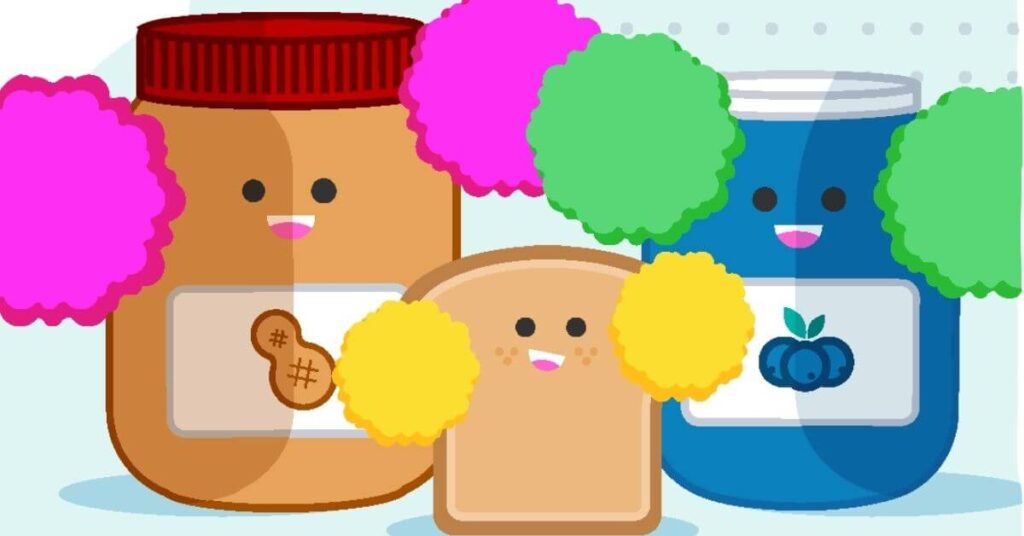Item management is such an essential function of managing a school kitchen. If items are inaccurate in your nutrition management system, it creates a whole host of issues. Plus, the corrections take more time that you already don’t have.
Adding a single item, or ingredient, in multiple places into your school nutrition system is a waste of time. It’s also a total pain in the b-u-t-t. When you have to enter items more than once in your system, the risk for mistakes increases. And we all know mistakes create more work.
Are you over it? If not, you’re about to be. In this post, you will meet Fred, the lonely slice of bread. Fred will reveal entering an item in separate systems adds up to high labor costs and a stressed workforce.
Meet Fred, the Lonely Slice of Bread

In the not so distant past (yesterday), a slice of whole grain wheat named Fred was born. He utterly oozed practicality. His crust and crumbs practically begged for a heaping slather of smooth peanut butter – anything to be less practical. He found himself gazing across the bakery at other livelier breads: potato, corn, sourdough. Of course, everyone was jealous of rye (what style and pizazz!).
As his first day on earth wore on, Fred found himself feeling lonely. No one paid the generous slice of whole wheat much mind. Feeling dejected and lacking any energy, Fred lay on the cold bakery countertop while awaiting his fate.
Quite suddenly, a warm hand lifted Fred for inspection. He looked up and that’s when he saw the angelic face of Debbie the Nutrition Director. Fred hoped beyond hope that she would choose him over all the other breads in the bakery.
“Randy, are you seriously telling me this whole grain wheat is more nutritious AND costs less than the bread I’ve been ordering,” Debbie asked in astonishment. “How…practical and perfect for our students.”
Fred couldn’t stop blushing.
Debbie placed an order with the baker and then returned to her office to add the bread to her school nutrition management system – a chore she knew was best to get out of the way. Debbie found herself growing more frustrated with her system by the day. As she daydreamed about a real-time system, she signed and began adding the information about the new bread.
Item Management without Real-Time Data
As we read above, Debbie’s item entry takes quite a bit of time. In fact, it takes so much of her time that she considers it a chore. Let’s see what it looks like for Debbie to enter a single slice of bread, like Fred, into her system.
- The bread is an ingredient, it is added to her turkey sandwich. So, Debbie goes into the ingredients area of the platform and enters all of the nutritional information and related details.
- The bread is served directly to her students, but it is served in different amounts based on the age level of Debbie’s students. She updates the serving sizes individually for K-5 students, and then grades 6-8, and finally her 9-12 students.
- The bread is also inventoried. It is purchased by the pallet. On the pallet there are cases. In the cases are bags of bread slices.
- The slice is also sold as an a la carte item at the POS.
- The bread also needs to be added to their menu board platform.
- The bread also needs to be added to their online menus.
Wow! That’s a lot of data entry for a single ingredient! The good news is that it’s far simpler in the TITAN System by LINQ.
Item Management with Real-Time Data
When a school nutrition management system uses real-time data, updates are quick and easy. If Debbie had the TITAN system by LINQ, she would add a slice of bread as an item. That lonely slice of bread (hi, Fred!) becomes associated with the various modules. And each serving size, pack size and unit of measure is associated with a base unit.
If the base unit is one slice of bread, then we know how many slices are in each serving size, each bag, and each pallet. This means that entering the nutritional information in one place immediately updates everything.
Single item entry and management cuts down on labor costs, increases ingredient accuracy, and saves a ton of time. In fact, the average school nutrition program saves 17 minutes per item using the TITAN System.
School Nutrition Programs and Item Management Go Together Like PB&J

From reduced labor costs to increased accuracy, real-time item management management makes your program far more efficient. In the TITAN System by LINQ, a slice of bread is a slice of bread is a slice of bread. There’s no more concern over losing 35 minutes to single item additions or fixes.
On top of that, real-time data makes it possible to keep your menus compliant and your inventory in check. It may just be the key to school nutrition paradise.
As for Debbie, she’s still sitting at her desk and entering the nutrition information for whole grain wheat bread. The good news: Fred is getting the attention he always longed for.
Does menu planning make you nutty? In our FREE toolkit, you’ll discover ways to make the entire process more efficient. Plus, we’ve included can’t-miss marketing tips that will help drive participation. Download our FREE toolkit, Make Menu Planning Your Jam for helpful tips and tricks!
WATCH: A Nutrition Director Explains Why She Loves TITAN on First Taste TV
We love TITAN obviously, but hearing directly from a nutrition director is so much more valuable. Watch as they explain how the TITAN System helps their program succeed.
